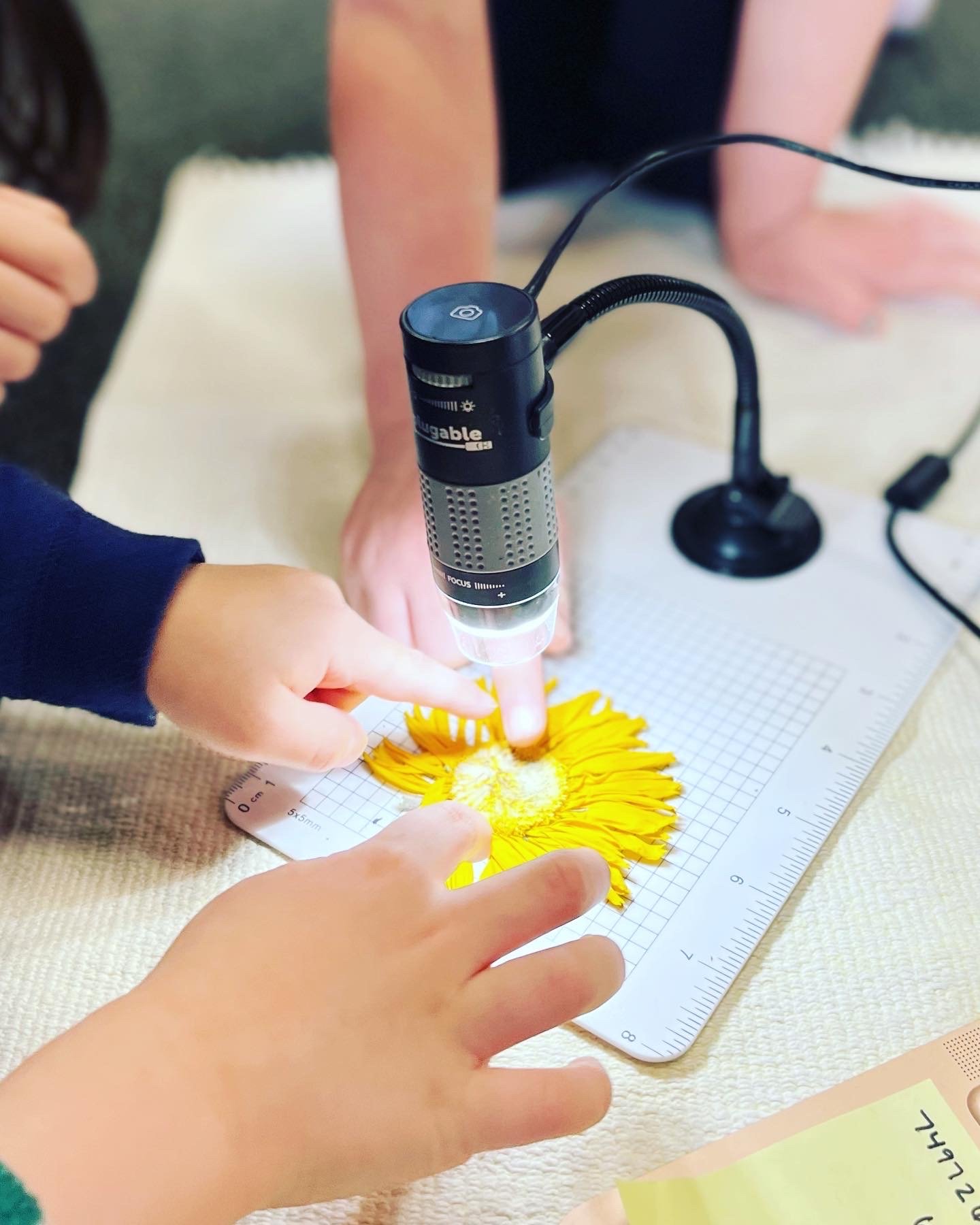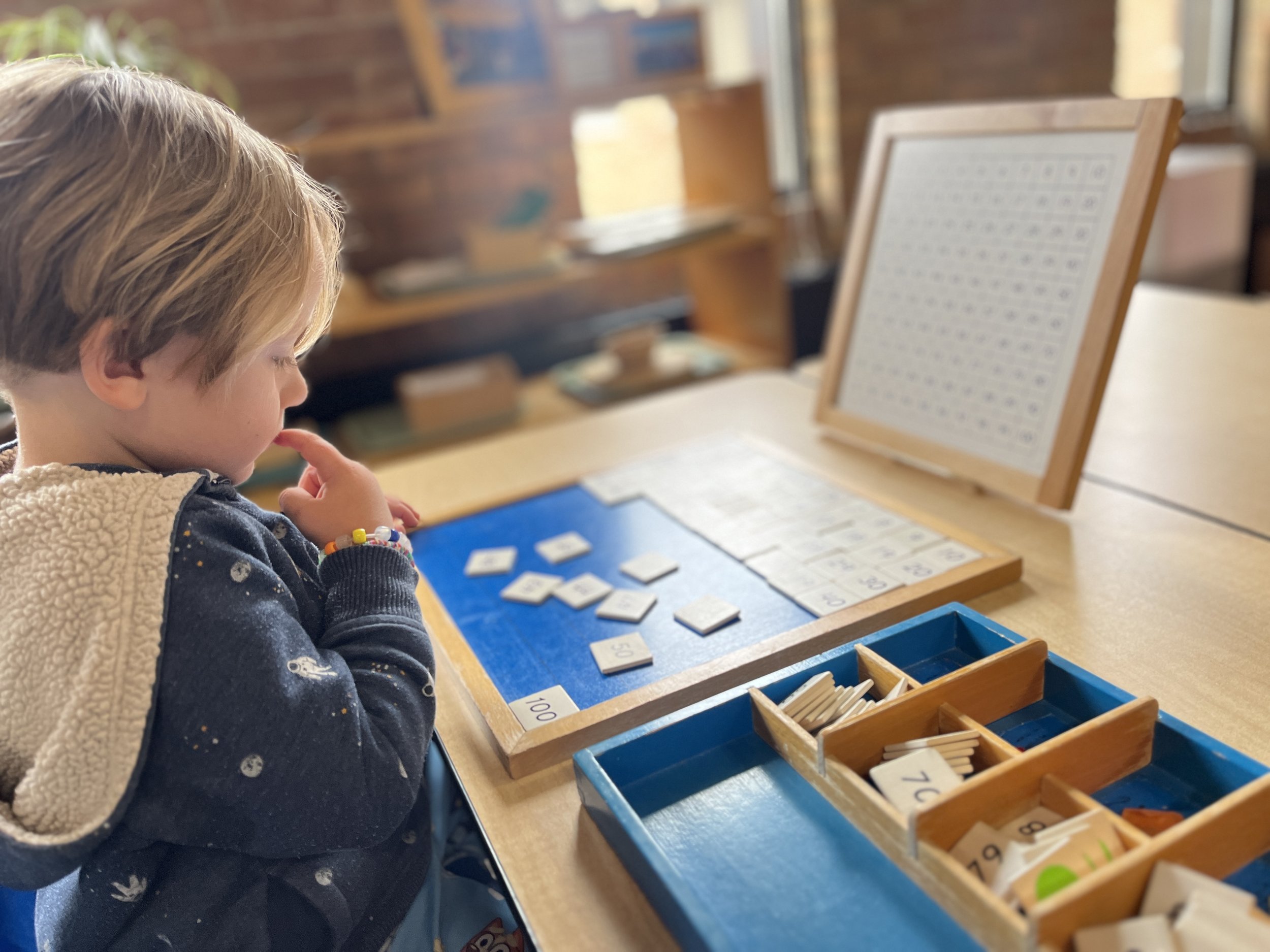the blending of two approaches
While there are certainly differences in the Montessori and Reggio Emilia educational philosophies, we have found that they are capable of blending together seamlessly to create a more complete approach to education. At Kinderhaus Montessori we have found that these two educational philosophies, when blended into one, offer an enhanced experience that is able to meet the needs of each child individually. While we work with traditional Montessori materials in the classroom, our work is daily guided by the voices and interests of the children. Our classroom is an ever evolving space that is reflective of the children, teachers and families that are currently present.
The Montessori Method
Dr. Maria Montessori, a pioneer in the field of education and Italy’s first female physician, was years ahead of her time in creating her world-renowned method of education.
Montessori was the first educator to introduce child-sized furniture and objects and to allow the children to be active agents in their own learning. She was also one of the first people who understood the importance of hands-on learning in early childhood and believed in capitalizing on children’s developmental “sensitive periods”, understanding that children will thrive if placed in the right environment.
Inspired by a period of time she spent in India, Dr. Montessori also believed that children should be educated on “Cosmic Education”—that all living things on earth are interconnected and can coexist. She was nominated three times for the Nobel Peace Prize. Children in Montessori schools across the world are educated on the concept of peace and do their best to help create a more peaceful world.
Principles of Montessori Education
Self-Guided Learning
Children work independently, making selections from a choice of pre-prepared materials and developing self-sufficiency. They’re given guidance from their teachers and encouraged to learn naturally through the art of play, which is considered to be their ‘work’.
Uninterrupted ‘Work Time’
Our day includes extended periods of time, known as work time, in which the children move throughout the classroom selecting materials with which to work. This is a time where the child paces themselves, deciding when to interact with others, work alone or take a break. The educational environment is set out in individual areas, meaning pupils move from area to area within the classroom area to undertake different activities. This promotes the importance of movement, along with independence and sensory stimulation.
Hands On Learning
All activities in the classroom are designed especially for the children and the ‘sensitive period’ they are each moving through. The materials on the shelves and in the classroom change regularly in order to continue supporting the growth and development of each individual child.
Mixed-Age Classrooms
Rather than grouping children by brith-age, children work in mixed aged settings based on developmental needs and sensitive periods. They are encouraged to observe each others work and act as leaders and role models in the classroom.
Intrinsic Motivation
In a Montessori classroom, children are not rewarded for a deed done. They are instead supported in their efforts and provided challenges throughout the day. Children learn to do things for themselves, and that helps drive their independence and intrinsic motivation
The Reggio Emilia Approach
Following the turmoil of World War II, the community of Reggio Emilia came together to rebuild their schools, believing that the children of their city had a right to education above all else.
Loris Malaguzzi, a long-time teacher and Director in the Reggio Emilia schools, led this movement and helped to form what is now referred to as the Reggio Emilia Approach to Education.
Founded with the belief that children are born with immense capabilities and potential, Reggio Emilia opened it’s first municipality-run school in 1963. Since then, schools around the world have been inspired by this child-first approach to education and the commitment to exploring the hundred languages with which children choose to express their ideas.
It is built on the idea that the experiences in the classroom are driven by the ideas, interests and questions of the children. Teachers, along with the families, children and classroom environment, are all active participants in the daily learning that is taking place.
The Reggio Emilia Approach places great value on observing, documenting and showing the value of the children’s ideas.
principles of the reggio emilia approach
Children as Active Participants
As a Reggio Emilia inspired school we believe that children are born equipped with extraordinary potentials for learning. They advocate for the rights of each child to learn, grow and be an active protagonist in the construction of their experiences.
The Hundred Languages
As a Reggio Emilia inspired school we believe that children possess a hundred languages: a hundred ways of thinking, expressing, and understanding their experiences. The hundred languages is a metaphor for the extraordinary potentials of children that are innately inside them. They believe that it is our duty as co-learners with the children to make visible all of these languages, verbal and non-verbal, with equal dignity.
Adults as Co-Learners
As educators, parents and adults, we believe it is out role to act as co-learners alongside the children. The classroom teachers and families communicate openly, with each other and the children, to further the thinking and explorations in the classroom. We believe that children carry within them the knowledge necessary for explorations and that our role as adults is to help foster the questions that can deepen their thinking. We value children as capable and resilient, no matter their challenges, and always guide with intention.
The Classroom as the Third Teacher
Our classroom has been carefully and intentionally designed to support the children’s on-going learning. Each material has been chosen by the children and teachers to provoke questions, theories and ideas that can lead to expanding on the children’s interests. The materials evolve and change often to stay in line with the children’s thinking and interests. This can often be seen through the use of loose parts, expressive/art-based materials and open ended materials.
Observation, Documentation and Research
The teachers in the classroom daily observe the interests and interactions of the children - with the materials, each other and the adults in the classroom. These collected observations help to formulate questions that can then inspire more intentional work from the children. We document these observations throughout our classroom in order to make visible the learning that is taking place each day. We view ourselves and the children as researchers, constantly seeking more knowledge. We believe that it is the right of our educators to continue to develop professionally and seek out opportunities to continue learning as well.







